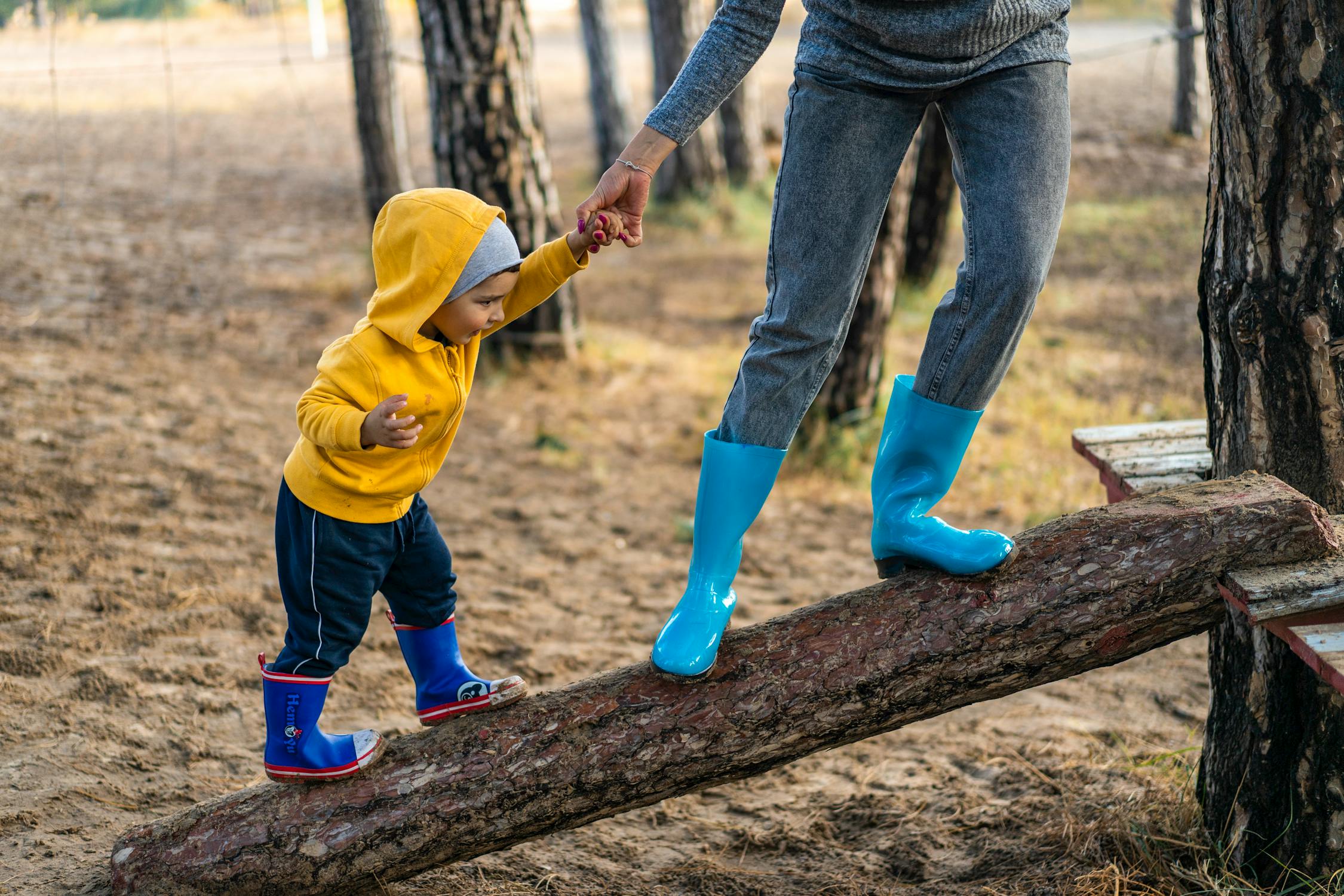How to Raise Independent Kids (Without Helicoptering)
Raising children is a beautiful blend of challenge and reward. As parents, we walk the fine line between protecting our little ones and preparing them to face the world on their own. But in a time when "helicopter parenting" has become almost the norm, it’s natural to wonder: how do we raise independent kids without hovering over every move they make?
The answer lies in balance. It’s not about letting go entirely, it's about stepping back intentionally. About giving our children the space they need to grow, while still being their emotional anchor. In this post, we’ll explore gentle yet effective ways to foster autonomy in children, without sacrificing safety, warmth, or connection.

Why Raising Independent Kids Matters
Imagine a child who makes confident decisions, adapts to change, expresses themselves clearly, and solves problems with creativity. Sounds like a dream, right? This isn’t just wishful thinking — it’s the natural outcome of an upbringing that encourages autonomy.
Children who grow up feeling capable and trusted are more likely to develop:
- Resilience and grit
- Emotional regulation skills
- Confidence in their own voice
- Healthy social relationships
- Problem-solving and critical thinking
Ultimately, independence doesn’t just prepare kids for adulthood. It allows them to fully experience and enjoy their childhood.
What Is Helicopter Parenting (and Why We Do It)?
Helicopter parenting refers to over-involvement in a child’s life. Constantly hovering, making decisions for them, solving their problems before they arise, and shielding them from failure. It's driven by love and a desire to protect, but it can actually undermine a child’s growth.
Some signs of helicoptering include:
- Always intervening in play or peer conflict
- Over-scheduling activities or micromanaging schoolwork
- Not allowing your child to experience age-appropriate risk
- Talking to teachers, coaches, or friends on your child's behalf (constantly)
At its core, helicoptering sends one unspoken message: “I don’t think you can handle this on your own.”

The Fine Art of Stepping Back Gracefully
Start by Trusting Them
Children pick up on our beliefs about them. When you believe in their ability to try, fail, and try again, they begin to believe in themselves too.
Try this: Instead of saying, “Let me do it for you,” say, “Would you like to try it yourself first?”
Normalize Struggle and Failure
Yes, it’s hard to watch your child fumble or fail. But that’s how they build resilience. Failure isn’t the opposite of success, it’s a stepping stone toward it.
Say this instead: “It’s okay that it didn’t work out. What do you want to try next time?”
Offer Choices Early and Often
Whether it’s picking out their clothes, deciding what fruit to eat, or choosing which book to read. Choices help kids feel ownership.
Bonus Tip: Make the choices manageable: “Do you want the red shoes or the blue ones?”
Encourage Problem Solving
When your child hits a roadblock, resist the urge to swoop in. Instead, guide them through it.
Ask this: “What do you think we should do about it?” or “What are your ideas?”
Creating an Environment That Builds Confidence
Create Child-Friendly Spaces
Place items within their reach: Snack drawers, coat hooks, and step stools. When a child can do something by themselves physically, they’ll want to do it emotionally too.
Pro Tip: Use a booster seat like the Stokke® BoosterMe at the dining table. It gives your child the dignity of sitting “like the grown-ups,” while staying safe and supported.
Give Them Roles at Home
Kids love being helpful. Assign age-appropriate tasks like setting the table, folding washcloths, watering plants — and treat them like contributions, not chores.
Affirmation to say: “You are such a great helper. I really count on you.”
Practice Patience with Mess
Learning is messy. Spilled milk, torn pages, and toppled towers aren’t disasters — they’re signs your child is exploring and growing.
Mantra to repeat: “Progress over perfection.”
What Independence Looks Like at Different Ages
| Age | Support Their Independence By… |
|---|---|
| 1–2 yrs | Letting them feed themselves, walk, and choose simple items |
| 3–4 yrs | Giving small chores, letting them dress themselves |
| 5–6 yrs | Encouraging solo play, assigning responsibility |
| 7–8 yrs | Problem-solving together, letting them speak for themselves |
| 9–10 yrs | Managing homework time, helping plan routines |

The Role of Emotional Safety
We often think independence means “do it yourself,” but true independence stems from emotional security. Kids need to know that no matter what happens, your love is unconditional.
That’s why the most powerful parenting message isn’t “You can do it alone.” It’s:
“I believe in you — and I’ll be here if you need me.”
Let them soar, knowing your love is the soft landing.
Raising Independent Kids, One Day at a Time
This isn’t a switch you flip — it’s a mindset you cultivate over time. Some days you’ll step in too quickly. Other days you’ll let go too soon. That’s okay. It’s all part of learning how to parent with courage, grace, and trust.
Just remember: independence and connection aren’t opposites. They’re teammates. When you build a relationship rooted in respect, belief, and warmth, your child will naturally rise to meet their potential.
FAQs
Isn’t letting kids do everything alone unsafe?
Not at all — when done with boundaries. Offer support where needed, but let them try in safe environments.
How do I deal with my anxiety when they struggle?
Take a deep breath. Letting go is hard, but it's a gift. Every stumble is building their strength.
My child doesn’t want independence. What should I do?
Sometimes it’s about building their confidence first. Start small, celebrate wins, and stay consistent.
Can I raise an independent child and still be nurturing?
Absolutely. Independence thrives when nurtured in a warm, supportive space.
What if I’ve been a helicopter parent already?
It’s never too late. Awareness is the first step. Shift slowly and communicate openly with your child.
How do I know if I’ve found the right balance?
If your child is trying new things, expressing opinions, and bouncing back from setbacks — you’re doing great.
Conclusion
Raising independent kids is one of the most beautiful legacies you can offer. It means trusting them enough to let go — a little at a time — and showing up when they need a hand. By gently guiding, patiently stepping back, and cheering them on with love, you're shaping not just capable children, but confident, compassionate, and courageous humans.








